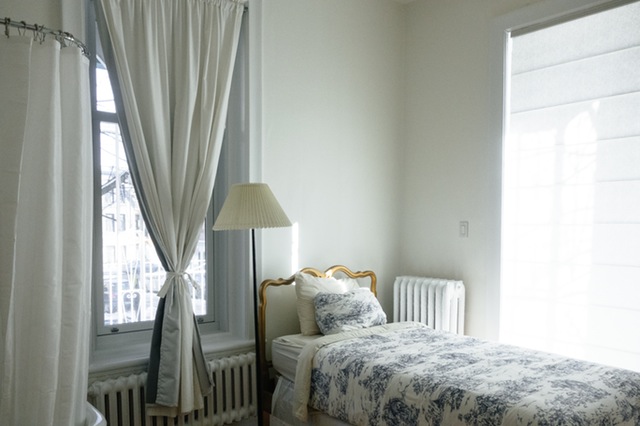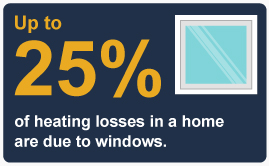
Heating your home during the winter accounts for nearly 20 percent of the energy that you use. Depending on your home’s building envelop, as well as your heating practices, the amount of energy that your furnace consumes could be greater. By making simple changes to your home and habits, you’ll shrink your home heating bills and reduce the wear on your furnace without sacrificing comfort.
How to Cut Home Heating Bills
Change the furnace’s filters.
Your furnace’s filters trap dust, allergens and other particles. If the filter is clogged, the furnace will have a harder time circulating air and use more energy to heat your home. Keep your furnace in top shape by changing the filter bimonthly.
Seal holes in exterior and interior walls.
Old screw holes, pipes and cables entering your home, electrical boxes, gaps between window frames, and other types of holes in your home’s walls allow warm air to escape and cold air to enter during the winter. Inspect the walls on your property and fill smaller holes with waterproof caulk (for exterior walls) or spackling (for interior walls). If the holes are larger, like where pipes enter or exit your home, seal the gaps using expanding spray foam. Keep in mind that some plumbing features have escutcheon rings on the wall for decorative purposes. These rings will not block air leaks, so you should seal the area around the pipe before installing or mounting a ring.
Sneaky spaces where cold air can enter your home is through electrical boxes that house receptacles and light switches on walls along the perimeter of your home, such as a wall with a window. Remove a receptacle or switch’s cover plate and use spray foam or acrylic latex caulk to fill gaps between the electrical box and drywall. Then place a foam gasket over the receptacle or switch and replace the cover.
Refresh the weatherstripping around the doors and windows.
Old, worn and torn weatherstripping lets warm air leak out and cool air sneak in, making your furnace work harder to keep your home warm. Cut down on drafts and heating losses by up to 10 percent by replacing old weatherstripping with new weatherstripping every few years.
Adjust the door’s thresholds.
A threshold is a slightly raised, sloped piece of wood or metal that extends along the bottom of a door’s frame. It sits above the doorsill. If you can see light under an exterior door, such as the front door, warm air is escaping your home. Remedy this problem by raising the threshold’s height, which is as simple as turning the screws along threshold counterclockwise. The threshold should be high enough that you cannot see light beneath the door (except for a bit in the corners), but not so high that opening and closing the door is difficult.
Consider using a space heater.
If your family tends to gather in one room, like a den or living room, consider turning down the temperature on the thermostat and using a space heater. For every degree that the thermostat is below 70°F, you’ll save up to 3 percent on your energy costs. While a 1,500-watt heater costs around $0.14 per hour to use, it’s less expensive than using the furnace to maintain the warm temperatures that you desire, especially if you are only using one room in your home. If the room that you wish to use the space heater in does not have doors, hang a heavy curtain at the room’s entrances to trap the heat.
Upgrade or cover your windows.
Up to 25 percent of heating losses in a home are due to windows. Simply covering your windows with a seasonal clear plastic film can save up to 14 percent on heating bills. Take your energy savings a step further by installing permanent low-emissivity window films, which have reflective properties that further reduce heat transfers. If you have older windows, consider upgrading them with double or triple pane windows for the greatest energy benefits.
Schedule a professional inspection.
Minor problems in a furnace lead to wasted energy and major repairs. Prevent breakdowns and keep your furnace running optimally by hiring a licensed professional to inspect and maintain your furnace every year. A professional should also clean and inspect the ductwork in your home every few years, as well. A leaky duct diverts up to 30 percent of the warm air that a furnace produces to unused areas of your home, making it work harder to keep you comfortable.
Keeping your home cozy during the coldest months of the year doesn’t have be a burden on your bank account. If you have questions about efficient home heating or would like to schedule maintenance, get in touch with the specialists at AAA Heating and Cooling. let us help you prepare your furnace for the winter!